Related Research Articles
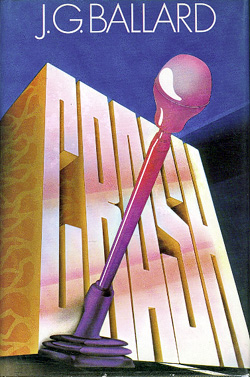
Crash is a novel by English author J. G. Ballard, first published in 1973 with cover designed by Bill Botten. It follows a group of car-crash fetishists who become sexually aroused by staging and participating in car accidents, inspired by the famous crashes of celebrities.

Horror is a genre of speculative fiction that is intended to disturb, frighten, or scare. Horror is often divided into the sub-genres of psychological horror and supernatural horror, which are in the realm of speculative fiction. Literary historian J. A. Cuddon, in 1984, defined the horror story as "a piece of fiction in prose of variable length ... which shocks, or even frightens the reader, or perhaps induces a feeling of repulsion or loathing". Horror intends to create an eerie and frightening atmosphere for the reader. Often the central menace of a work of horror fiction can be interpreted as a metaphor for larger fears of a society.
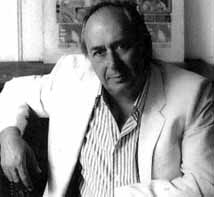
James Graham Ballard was an English novelist and short-story writer, satirist and essayist known for psychologically provocative works of fiction that explore the relations between human psychology, technology, sex and mass media. Ballard first became associated with New Wave science fiction for post-apocalyptic novels such as The Drowned World (1962). He later courted controversy with the short-story collection The Atrocity Exhibition (1970), which includes the 1968 story "Why I Want to Fuck Ronald Reagan", and later the novel Crash (1973), a story about car-crash fetishists.
The New Wave was a science fiction style of the 1960s and 1970s, characterized by a great degree of experimentation with the form and content of stories, greater imitation of the styles of non-science fiction literature, and an emphasis on the psychological and social sciences as opposed to the physical sciences. New Wave authors often considered themselves as part of the modernist tradition of fiction, and the New Wave was conceived as a deliberate change from the traditions of the science fiction characteristic of pulp magazines, which many of the writers involved considered irrelevant or unambitious.
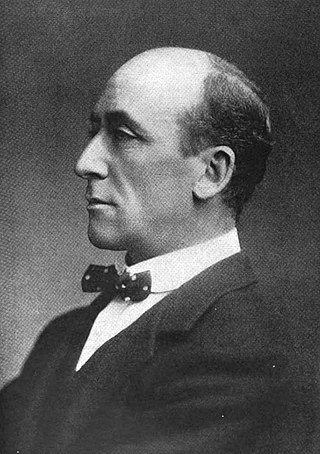
Algernon Henry Blackwood, CBE was an English broadcasting narrator, journalist, novelist and short story writer, and among the most prolific ghost story writers in the history of the genre. The literary critic S. T. Joshi stated, "His work is more consistently meritorious than any weird writer's except Dunsany's" and that his short story collection Incredible Adventures (1914) "may be the premier weird collection of this or any other century".
Damien Francis Broderick is an Australian science fiction and popular science writer and editor of some 74 books. His science fiction novel The Dreaming Dragons (1980) introduced the trope of the generation time machine, his The Judas Mandala (1982) contains the first appearance of the term "virtual reality" in science fiction, and his 1997 popular science book The Spike was the first to investigate the technological singularity in detail.

Science Fantasy, which also appeared under the titles Impulse and SF Impulse, was a British fantasy and science fiction magazine, launched in 1950 by Nova Publications as a companion to Nova's New Worlds. Walter Gillings was editor for the first two issues, and was then replaced by John Carnell, the editor of New Worlds, as a cost-saving measure. Carnell edited both magazines until Nova went out of business in early 1964. The titles were acquired by Roberts & Vinter, who hired Kyril Bonfiglioli to edit Science Fantasy; Bonfiglioli changed the title to Impulse in early 1966, but the new title led to confusion with the distributors and sales fell, though the magazine remained profitable. The title was changed again to SF Impulse for the last few issues. Science Fantasy ceased publication the following year, when Roberts & Vinter came under financial pressure after their printer went bankrupt.

The Atrocity Exhibition is an experimental novel of linked stories or "condensed novels" by British writer J. G. Ballard.
Transrealism is a literary mode that mixes the techniques of incorporating fantastic elements used in science fiction with the techniques of describing immediate perceptions from naturalistic realism. While combining the strengths of the two approaches, it is largely a reaction to their perceived weaknesses. Transrealism addresses the escapism and disconnect with reality of science fiction by providing for superior characterization through autobiographical features and simulation of the author's acquaintances. It addresses the tiredness and boundaries of realism by using fantastic elements to create new metaphors for psychological change and to incorporate the author's perception of a higher reality in which life is embedded. One possible source for this higher reality is the increasingly strange models of the universe put forward in theoretical astrophysics.
Edward John Carnell was a British science fiction editor known for editing New Worlds in 1946 then from 1949 to 1963. He also edited Science Fantasy from the 1950s. After the magazines were sold to another publisher he left to launch the New Writings in SF anthology series, editing 21 issues until his death, after which the series was continued by Kenneth Bulmer for a further 9 issues.
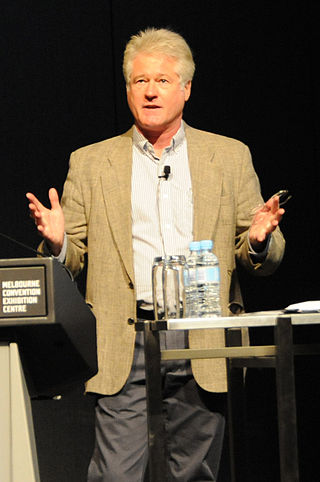
Russell Blackford is an Australian writer, philosopher, and literary critic.

The 4-Dimensional Nightmare, also known as Voices of Time, is a collection of science fiction short stories by British writer J. G. Ballard, published in 1963 by Victor Gollancz.

The Overloaded Man is a collection of science fiction stories by British writer J. G. Ballard, first published in 1967 as a paperback by Panther Books.
In science fiction, a time viewer, temporal viewer, or chronoscope is a device that allows another point in time to be observed. The concept has appeared since the late 19th century, constituting a significant yet relatively obscure subgenre of time travel fiction and appearing in various media including literature, cinema, and television. Stories usually explain the technology by referencing cutting-edge science, though sometimes invoking the supernatural instead. Most commonly only the past can be observed, though occasionally time viewers capable of showing the future appear; these devices are sometimes limited in terms of what information about the future can be obtained. Other variations on the concept include being able to listen to the past but not view it.

Terence William (Terry) Dowling, is an Australian writer and journalist. He writes primarily speculative fiction though he considers himself an "imagier" – one who imagines, a term which liberates his writing from the constraints of specific genres. He has been called "among the best-loved local writers and most-awarded in and out of Australia, a writer who stubbornly hews his own path ."
Australia, unlike Europe, does not have a long history in the genre of science fiction. Nevil Shute's On the Beach, published in 1957, and filmed in 1959, was perhaps the first notable international success. Though not born in Australia, Shute spent his latter years there, and the book was set in Australia. It might have been worse had the imports of American pulp magazines not been restricted during World War II, forcing local writers into the field. Various compilation magazines began appearing in the 1960s and the field has continued to expand into some significance. Today Australia has a thriving SF/Fantasy genre with names recognised around the world. In 2013 a trilogy by Sydney-born Ben Peek was sold at auction to a UK publisher for a six-figure deal.
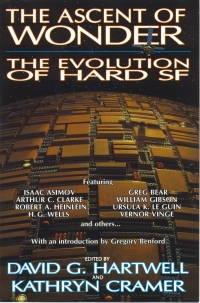
The Ascent of Wonder: The Evolution of Hard SF is a definitive 1994 anthology of hard science fiction (sf) short stories compiled by the award-winning editing team of David G. Hartwell and Kathryn Cramer. This 990-page book includes 68 stories, each prefaced by a brief note to describe facts about the author, related works, or the logic of the story's inclusion in the genre. In addition, the book opens with three essays about the meaning and the boundaries of hard science fiction. The editors further explored these issues in The Hard SF Renaissance (2002).

Science Fiction: The 100 Best Novels, An English-Language Selection, 1949–1984 is a nonfiction book by David Pringle, published by Xanadu in 1985 with a foreword by Michael Moorcock. Primarily, the book comprises 100 short essays on the selected works, covered in order of publication, without any ranking. It is considered an important critical summary of the science fiction field.

Trent Jamieson is an Australian writer of speculative fiction.
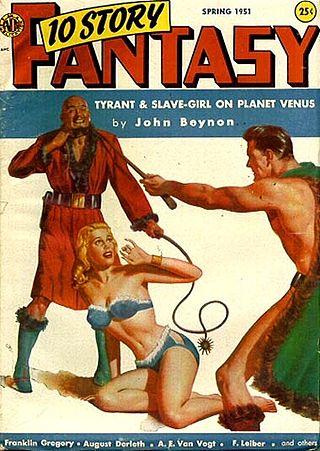
10 Story Fantasy was a science fiction and fantasy pulp magazine which was launched in 1951. The market for pulp magazines was already declining by that time, and the magazine only lasted a single issue. The stories were of generally good quality, and included work by many well-known writers, such as John Wyndham, A.E. van Vogt and Fritz Leiber. The most famous story it published was Arthur C. Clarke's "Sentinel from Eternity", which later became part of the basis of the movie 2001: A Space Odyssey.
References
- ↑ Peter Brigg (1 January 1985). J.G. Ballard. Wildside Press LLC. pp. 33–. ISBN 978-0-916732-83-7.
- ↑ Michel Delville (1998). J.G. Ballard. Oxford University Press. pp. 15–. ISBN 978-0-7463-0867-7.
- ↑ Gregory Stephenson (1991). Out of the Night and Into the Dream: A Thematic Study of the Fiction of J.G. Ballard. ABC-CLIO. pp. 169–. ISBN 978-0-313-27922-5.
- ↑ March-Russell, Paul (2012-01-01). The Writing Machine: J. G. Ballard in Modern and Postmodern Short Story Theory. Brill Rodopi. ISBN 978-94-012-0832-1.
- ↑ John Boston; Damien Broderick (15 January 2013). Strange Highways: Reading Science Fantasy, 1950-1967. Wildside Press LLC. pp. 141–. ISBN 978-1-4344-4746-3.
- ↑ J. G. Ballard (1976). J. G. Ballard, the First Twenty Years. Bran's Head Books Limited. p. 42. ISBN 978-0-905220-03-1.
- ↑ Sellars, Simon (2008-04-16). ""Now: Zero" vs Death Note". Ballardian. Retrieved 2021-02-17.